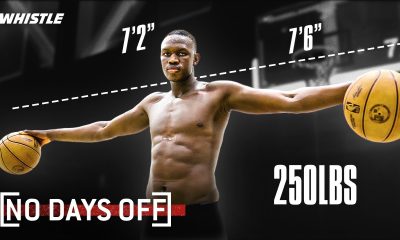NIL
Seton Hall basketball fans bracing for Kadary Richmond return with St. John's
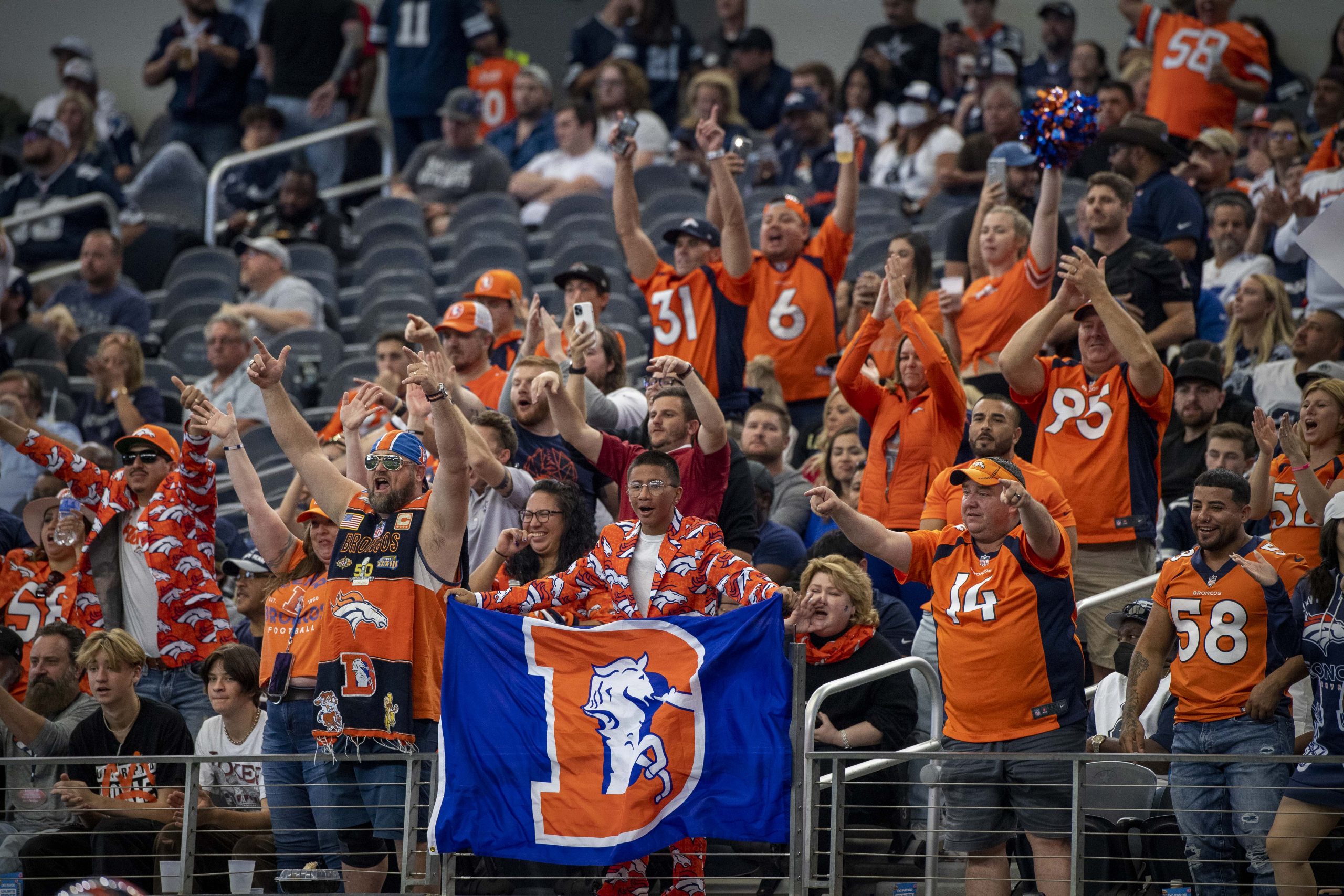


For three years at the Prudential Center, Jack Fortin rooted like crazy from his baseline courtside seat for Kadary Richmond.Like Stackhouse, Passner feels bad that Holloway now has to face off against the star he forged. “I will be cheering for him during introductions Saturday, although I might get punched in the head,” Passner said. “But when the game starts, he’s the enemy.”On Saturday Richmond returns to Newark for the most anticipated game on the Hall’s schedule (8 p.m. tip, Fox Sports 1). Fortin and his cohorts, who sit just a few feet away from the Johnnies’ bench, will be ready.

“We’re out for blood at courtside,” the senior said. “He had options to go other places and make money, but he had to pick St. John’s and the evil Rick Pitino. It’s like going from the Sox to the Yankees. So the Blue Beard Army, we’re ready. We’re going to give him a nice welcome.”The students in the front row plan on spelling out a special written message for Richmond. They’ll offer a classic verbal greeting, too.“He’s going to hear the boos,” Fortin said. “It’s a slap in the face, what he did.”Welcome to college basketball in 2025, where players change schools like socks – and sometimes flip to a rival. Richmond is the first Pirate ever to transfer within the Big East, a maneuver made possible by the onset of free agency.The Hall did get a St. John’s transfer in 2023 – guard Dylan Addae-Wusu – but there was no outcry from the Johnnies’ faithful about it because the newly arrived Pitino was reshaping their roster.Richmond’s departure was different. He was a star at the Hall, earning first-team All-Big East honors after averaging 15.7 points, 7.0 rebounds, 5.1 assists and 2.2 steals last winter. And he’d reached that level thanks in no small part to Pirates head coach Shaheen Holloway, who’d polished the gem in a way that Richmond’s previous coaches could not.Although Richmond’s move across the river had a strictly business feel – he seemed to genuinely enjoy his time in South Orange, but St. John’s was wielding a much larger name-image-likeness war chest – it felt deeply personal to many Hall fans. They’ll be processing that as the red-hot Johnnies (15-3 overall, 6-1 Big East) look to beat the struggling Pirates (6-11, 1-5) for just the second time ever in Newark.This is what four of them, all season-ticket holders, had to say about it.The torn fan





NIL
Penn State reportedly putting huge investment into football program under next head coach Matt Campbell

Penn State has landed on Iowa State’s Matt Campbell as its next head coach, ending a wild 54-day search after firing James Franklin.
In addressing the media following the choice to part with Franklin, athletic director Pat Kraft clearly laid out his idea for the next head coach in Happy Valley.
“We want someone who will attract elite talent, retain players in the NIL era and make Penn State a destination,” Kraft said on Oct. 13. “This is also about the modern era of college football. Our next coach needs to be able to maximize elite-level resources, attack the transfer portal and develop at the highest level.”
Now, we reportedly have some details on what those “elite-level resources” actually are.
Kraft and Penn State are committing about $30 million in NIL money for the football roster and $17 million for Campbell’s coaching staff, according to a report from Matt Fortuna.
That’s on top of an eight-year contract for Campbell that will place him among the top-10 coaching salaries in the country, according to ESPN and Yahoo Sports.
Under Franklin, Penn State had well-compensated rosters, but the model was not what Kraft envisioned.
Franklin preferred not to set the market on high school recruits and did not embrace the transfer portal fully, instead choosing to fill holes here and there.
Campbell will be tasked with flipping that script.
“We have invested at the highest level. With that comes high expectations,” Kraft added in October. “Ultimately, I believe a new leader can help us win a national championship.”
Listen to the Blue-White Breakdown podcast
NIL
Why Georgia is in court to seek damages from Damon Wilson’s NIL deal
Updated Dec. 5, 2025, 4:33 p.m. ET
The Georgia Athletic Association is seeking $390,000 from former Georgia football player Damon Wilson after he transferred to Missouri in January, weeks after agreeing to an NIL deal with the Classic City Collective.
The Classic City Collective, which shut down earlier this year, demanded that Wilson pay liquidated damages, based off the language of the contract. Wilson did not respond, according to online records in Superior Court of Athens-Clarke County.
The UGAAA then served a demand for arbitration on Wilson on Aug. 25, and he again did not respond, court records state. UGAAA holds all rights under agreements formerly held by the collective, Wilson was told in a letter sent to him by attorney Spence Johnson, representing UGAAA.
“When the University of Georgia Athletic Association enters binding agreements with student-athletes, we honor our commitments and expect student-athletes to do the same,” Georgia deputy athletic director Steven Drummond said Dec. 5 in a prepared statement given to the Athens Banner-Herald.
The application to compel arbitration was filed in court on Oct. 17. ESPN first reported about the dispute on Dec. 5.
Wilson and the Classic City Collective agreed to a contract worth $500,000, to run from Dec. 1, 2024 to Jan. 31, 2026. Wilson received the first monthly payment of $30,000 on Dec. 25, 2024, court records state.
Wilson was served a summons on Nov. 25 in Missouri and has 30 days to respond.
Wilson, a defensive end, is third in the SEC in sacks with 9 this season for the Tigers. Georgia, meanwhile, is last in the SEC this season with 17 sacks as a team.
Wilson played 26 games for Georgia in 2023 and 2024, registering 3.5 sacks and two caused fumbles. His departure was a blow for a defense that also lost eventual NFL first-rounders Mykel Williams and Jalon Walker after last season.
NIL
Buddie Defends Dykes as TCU Fans Fume Over 8–4 Season
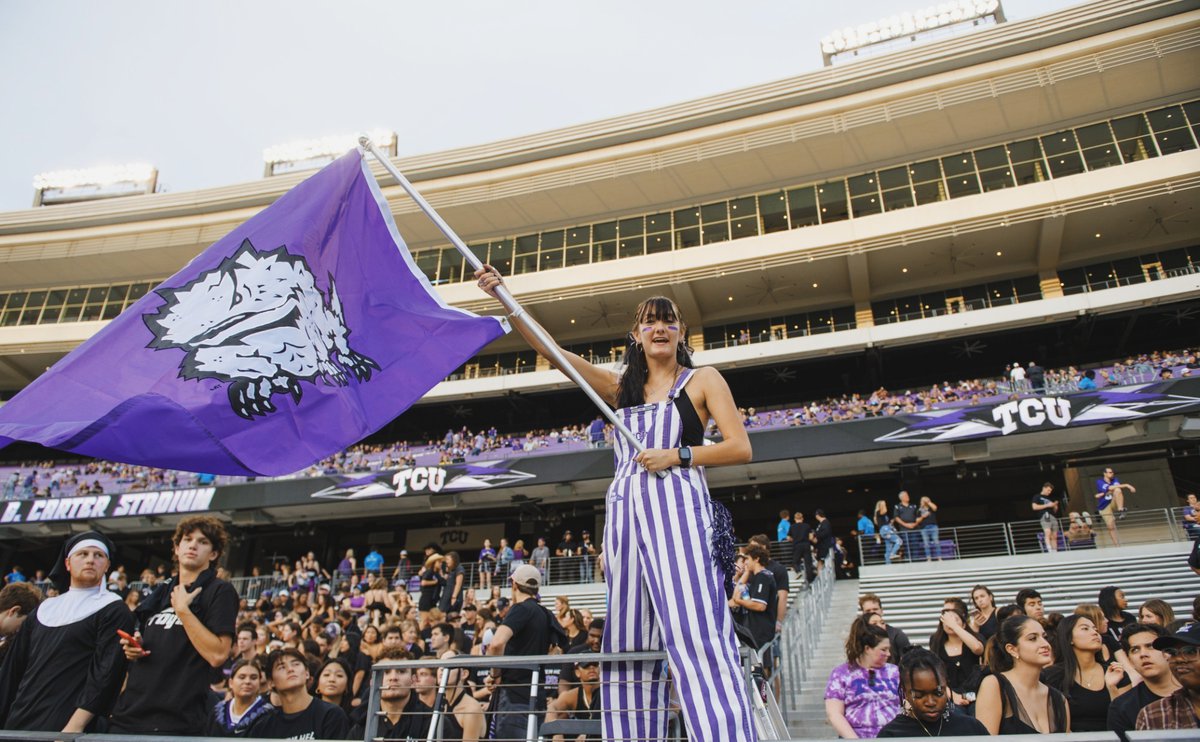
TCU’s just-passed 8-4 regular season had many in the purple people masses as angry as a tourist who just paid $40 to park, and for many others as disappointed as when Junior brought home an F in civics.
Many have expressed themselves in much the same way of our old friend, the frontier prospector Gabby Johnson of “Blazing Saddles” fame: No sidewindin’, bushwackin’, hornswagglin’ cracker croaker is gonna rouin me bishen cutter!
TCU Athletic Director Mike Buddie gets it.
“I think there were 11 teams in our league this year whose fan bases wanted their coaches fired,” Buddie said on Friday morning at the FIFA World Cup Draw party at Billy Bob’s Texas, the world’s largest honky tonk. “That’s the culture that we live in. You can win [against a] ranked opponent, [next week against] ranked opponent, [a third straight win against a] ranked opponent, and then lose — they want you gone.
“It’s a new day and age.”
Like the mood of Paris in 1793 — cheers in the morning, pitchforks and the guillotine by dusk.
TCU finished in the middle of a congested Big 12 at 5-4. To put some perspective on its season, Texas finished 9-3. Of course, many UT fans think the Longhorns should win every game, too. No. 25 Missouri, like TCU, finished 8-4. So, too, did Tennessee and Iowa, two teams receiving votes in the AP poll. In the end, after 12 regular-season games, only two teams finished undefeated — Ohio State and Indiana. One of those teams will lose this weekend; they play each other.
North Carolina — guided by renowned football genius Bill Belichick — stumbled to 4–8, taking a season-opening black eye from TCU.
Just last year, Ohio State fans wanted coach Ryan Day on the nearest interstate out of town after the Buckeyes took the worst kind of a second loss of the season — to Michigan. That was on Nov. 30. By the end of January, they wanted to elect him governor after winning the national championship.
The Horned Frogs will learn their postseason bowl destination on Sunday.
Dykes has gone 35-17 over four seasons at TCU, including 13-2 and a berth in the College Football Playoff championship game in his first season. That campaign included a victory over No. 2 Michigan in the Fiesta Bowl CFP semifinals.
TCU slipped to 5-7 in 2023 but went 9-4 last year and could do the same in 2025 with one last victory.
“We need to be better,” Buddie said. “We’re committed to getting better. I’m excited because nobody realizes that more than Sonny Dykes.
“He’s committed to addressing some needs that I think we have and more than ever before, what I do and how we strategically fundraise and approach people financially has a direct impact on your football program. I think Texas Tech showed us all that if you can build the most talented roster and develop them, really good things happen.”
Texas Tech, which is playing in the Big 12 Championship Game on Saturday against BYU, spent, according to reports and speculation, as much as $28 million on its football roster this season. The Red Raiders are No. 4 in the most recent CFP rankings.
Spending that kind of money is the result of a completely transformed landscape in college football. Colleges can now spend as much as $20.5 million on payroll for athletes in its various programs. That mostly impacts football and men’s basketball — those sports that generate the most revenue, the “revenue sports.”
Before that, each Division I school had an adjacent collective designed to allow athletes to cash in on their name, image, and likeness. That quickly evolved — devolved? — into merely paying athletes by writing checks out of the collective’s pool. Now completely legal after a U.S. Supreme Court case permitting athletes to receive compensation beyond traditional scholarships. The collectives simply became the mechanism to funnel those payments.
Most, if not all, of the collectives have now been merged with universities’ traditional athletics fundraising arm. NIL endorsement deals are now supposed to be just exactly that — an athlete endorsing a product, for example. I’m not exactly sure how all that sorts out.
“The landscape has changed, but we still have a ton of advantages in facilities and where we’re located and historical success,” said Buddie, who added that TCU also is “thoughtful and strategic in how we employ people.”
“We’re not in the business of paying $50 million buyouts for people to go away. And when you believe you’ve got the right person who’s already proven that he can win in the College Football Playoff, it’s incumbent on me to provide him every resource that he needs to be successful.”
NIL
Penn State football AD Pat Kraft rips recruiting, NIL in audio leak
Updated Dec. 5, 2025, 5:27 p.m. ET
- Leaked audio allegedly captures Penn State athletic director Pat Kraft criticizing the program’s recruiting and NIL strategy.
- Kraft is heard taking shots at rival programs like Oregon, Ohio State, and Michigan in the profanity-laced recording.
- The athletic director also questioned the effectiveness of NIL spending under former head coach James Franklin.
Athletics director Pat Kraft ripped Penn State football recruiting and NIL procedures under former coach James Franklin in an alleged team meeting.
“We probably need to (expletive) change the way we recruit. Because Alabama ain’t around (expletive). Oregon? Have you all been to Oregon? Ain’t (expletive) going on, it’s a bunch of (expletive) weirdos,” Kraft can be heard saying in audio that became public.
Kraft’s profanity-laced discussion with players before the regular-season finale at Rutgers was part of a purported audio recording of a team meeting that was leaked this week to the Dead Air Sports podcast. Kraft’s passionate discourse touched on a wide-range of topics — from taking shots at Big Ten opponents and his own program’s recruiting, to interim head coach Terry Smith, how NIL is allocated and the future of the program.
The recording, which features unidentified players speaking, was edited and does not feature the entire meeting, according to Dead Air Sports.
Recording and leaking the meeting without proper consent could be a felony under Pennsylvania’s wiretap laws.
Penn State officials did not immediately respond to a request for comment.

Kraft began his recruiting talk in the meeting by commenting on the 11 players in Penn State’s 2026 recruiting class who eventually flipped to Virginia Tech, where Franklin is now the head coach. The Lions, then, stunningly signed only two high school prospects during Wednesday’s early national signing day.
“All the guys that (were) on visits to Virginia Tech, they’re not even top-500 (ranked) kids that can help us win. You need help,” Kraft said, speaking to the players in the room. “You needed a wide receiver, but we couldn’t get a (expletive) dog to help open things up. Am I wrong? Would you have taken (Ohio State’s) Carnell Tate?
“Those are the things we have to get addressed if we are going to actually win a national championship, which is what we will do here. That’s what Ohio State, Michigan, as it pains me to (expletive) say, and Georgia, Bama and Oregon right now, although I think they’re frauds … think they’re not tough. That’s our edge, is the toughness.”

Kraft also made clear that he did not approve of Penn State’s NIL payment plan to players under Franklin — despite increased university investment.
“This is one of the highest-paid rosters in the country. … This roster that’s on the field right now, probably top four (in the nation). Now, how the money is spent is a different story. … it’s the strategy behind it that matters,” he said.
An unidentified player then described what believes is the NIL issue at Penn State: “The NIL with (Franklin) was kind of more like feed everyone and obviously pay the bigger guy. But I think with Terry (Smith), how he’s straight on with us … he’s going to pay who he needs to pay and not be a players’ coach and just pay everybody.”
Frank Bodani covers Penn State football for the York Daily Record and USA Today Network. Contact him at fbodani@ydr.com and follow him on X, formerly known as Twitter, @YDRPennState.
NIL
Wall Street Journal Article on NIL and Phillip Bell

Article is about Phillip Bells High School experience and being shopped to different schools and 7 x 7 teams. Really sad situation.
A few quotes:
“Bell’s mother, who abused drugs, shopped him from school to school, demanding up to $72,000 a year, according to court filings, public records and interviews with relatives and others who knew the family. He also joined a club team that paid thousands of dollars a weekend.’
On his visit to OSU: “The hotel room where Bell’s mother and stepfather were staying was “trashed,” leaving an OSU coach with a bill for broken furniture, his high-school coach later told relatives. A Buckeyes coach subsequently informed Bell’s mother that the team wanted her son, but the “entourage” wasn’t welcome in Columbus, the high-school coach said.
OSU declined to comment.
Before they left Ohio, Barnes’ blood sugar spiked to life-threatening levels, she suffered a heart attack and was hospitalized for several days, according to public records.”
Hoping that with support from OSU that he can break the cycle and achieve great things!
This link is behind a paywall: https://www.wsj.com/us-news/football-high-school-nil-phillip-bell-81270bdf?mod=hp_lead_pos7
Definitely worth a read – there is definitely a downside to the money flowing to these athletes. Kinda makes me wonder about the Legend Bey situation.
NIL
Georgia sues Missouri edge rusher Damon Wilson for nearly $400K over NIL contract he signed with Bulldogs
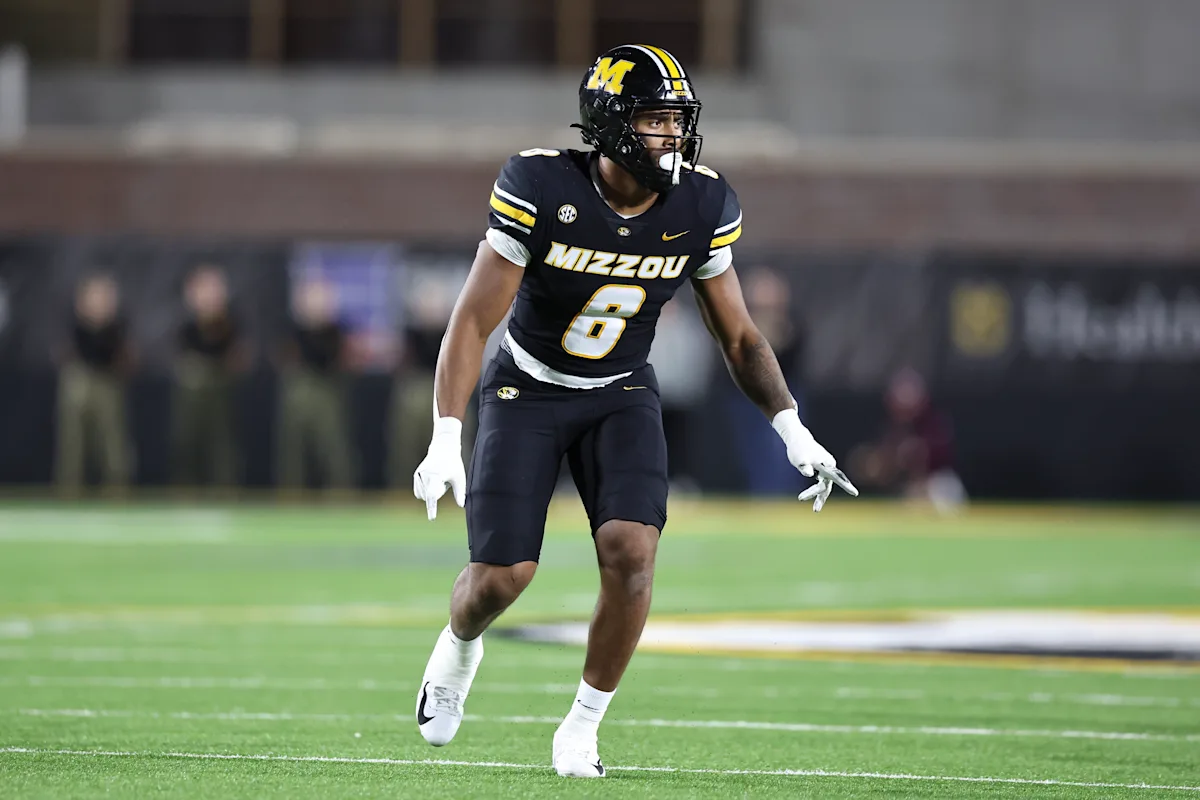
Georgia is attempting to get edge rusher Damon Wilson to pony up after his transfer to Missouri.
The school’s athletic association has filed a lawsuit against Wilson saying he owes $390,000 from the NIL contract he signed with the school’s collective in December 2024 ahead of Georgia’s College Football Playoff loss to Notre Dame. Wilson transferred after the 2024 season to Missouri and received one payment of $30,000.
Advertisement
Wilson, a junior, led Missouri with nine sacks and 9.5 tackles for loss this season. He had three sacks and 5.5 tackles for loss as a sophomore for the Bulldogs in 2024.
Georgia is claiming Wilson owes the balance of the base pay the contract stipulated he’d be paid via a liquidated damages claim. According to ESPN, Wilson’s deal with Classic City Collective was for $500,000 spread out over 14 monthly payments with two post-transfer portal bonuses of $40,000 and that he’d owe what was still set to be paid out to him if he left the team.
From ESPN:
“When the University of Georgia Athletic Association enters binding agreements with student-athletes, we honor our commitments and expect student-athletes to do the same,” athletics spokesperson Steven Drummond said in a statement to ESPN.
Georgia is not the first school to file a suit over NIL payments to a player who transferred. But the hard-line tactic is noteworthy, and may ultimately not work out in Georgia’s favor.
Advertisement
Schools typically do not ask coaches to pay out the balance of their contracts when leaving for another job. For example, Lane Kiffin did not have to pay Ole Miss what the school was scheduled to pay him over the rest of his deal with the school when he left for LSU. Instead, LSU paid Ole Miss $3 million for Kiffin to get out of his contract.
That situation happens all the time when coaches leave for new jobs. Their buyouts to get out of their contracts are far smaller than the buyouts schools owe when a coach is fired without cause.
And coaches are employees. Schools have long resisted that players be classified as employees and continue to do so even as the revenue-sharing era begins. The NCAA and its member schools have long clung to amateurism and that antiquated idea is why it took so long for players to get paid in the first place.
-

 Rec Sports2 weeks ago
Rec Sports2 weeks agoFirst Tee Winter Registration is open
-

 Rec Sports1 week ago
Rec Sports1 week agoFargo girl, 13, dies after collapsing during school basketball game – Grand Forks Herald
-

 Motorsports2 weeks ago
Motorsports2 weeks agoCPG Brands Like Allegra Are Betting on F1 for the First Time
-
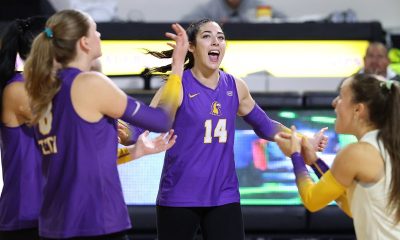
 Sports2 weeks ago
Sports2 weeks agoVolleyball Recaps – November 18
-

 Motorsports2 weeks ago
Motorsports2 weeks agoF1 Las Vegas: Verstappen win, Norris and Piastri DQ tighten 2025 title fight
-

 Sports2 weeks ago
Sports2 weeks agoTwo Pro Volleyball Leagues Serve Up Plans for Minnesota Teams
-

 Sports2 weeks ago
Sports2 weeks agoSycamores unveil 2026 track and field schedule
-

 Sports1 week ago
Sports1 week agoUtah State Announces 2025-26 Indoor Track & Field Schedule
-

 Sports1 week ago
Sports1 week agoTexas volleyball vs Kentucky game score: Live SEC tournament updates
-

 NIL5 days ago
NIL5 days agoBowl Projections: ESPN predicts 12-team College Football Playoff bracket, full bowl slate after Week 14
















